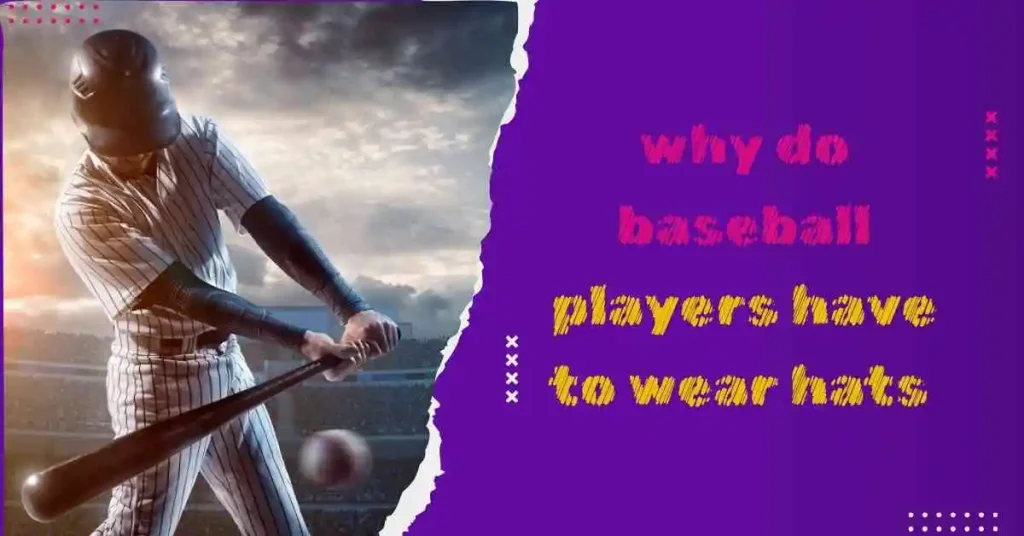
Baseball caps are not only a staple for baseball but have become an essential part of American culture, not only functionally but also represent team loyalty and fun. Why do baseball players wear hats? That might seem simple , but the answer is more complex than protection from the sun. The baseball cap is a piece of gear that has grown and evolved for centuries, but its impact reaches far beyond the game proper. These hats or caps, particularly the New York Yankees hat and the snapback baseball cap, have become the most popular to wear in the game.
In this post, we’ll examine the history of baseball hats, their uses, and the types of hats players wear. We’ll also examine how to wear baseball caps and their place in the world of fashion today, giving you the best overall view of why baseball players wear caps and how they’ve evolved to become an integral part of the game.
The History of the Baseball Cap:
The baseball cap as a fashion item has a documented history of its own. Baseball’s early players wore simple cloth hats to protect themselves from the sun. The first baseball cap was officially sold by the Brooklyn Excelsiors in 1860, when players needed a way to shade their eyes from the sun.
As the game of baseball developed, so did the cap. The snapback baseball caps, with adjustable snaps on the sides, were a one-size-fits-all for both players and fans who loved the style they offered. This made the hats more functional, keeping players of all head sizes in mind. Then came the iconic MLB fitted caps, crafted and fitted to exact measurements, better enabling a player’s individuality to shine through visually.
By the 1940s, the baseball cap was a mandatory part of the uniform for all major league baseball players. Nowadays, baseball caps for women and fashionable baseball caps have been integrated into mainstream fashion and are not confined to the baseball field.
Why Do Baseball Players Wear Caps? The Functional Purposes
There is a tremendous amount of history to baseball hat caps, they were first worn by baseball players in 1954. Below are some of the primary reasons why players wear hats in games:
1. Sun Protection
Baseball players wear caps for sun protection. The brim of the hat keeps the sun out of their eyes and allows them to see the ball without having to squint. This is particularly important for outfielders, who are out in the sun tracking fly balls for longer periods of time.
2. Team Identity and Tradition
The New York Yankees hat is an excellent example of how caps and hats represent a team’s identity. Every MLB team has its hat design, typically featuring the team logo front and centre. This is a decades-old tradition that really holds each team together. Wearing a Yankees hat or even another team’s cap links players to that team’s history, its fans, and its players.
3. Hair Management
Some baseball players have long hair, and the cap helps with that. Many players (especially in the MLB) wear their hats to keep their hair under the brim so it’s not in the way or annoying. This keeps the player’s attention on the game and keeps him comfortable while playing.
4. Weather Conditions
In addition to sun protection, baseball caps were designed to meet other weather demands. Black baseball caps for example can help to soak up heat and help players remain cooler on hot playing days. In the meantime, green baseball caps blend into the field and eliminate the glare players notice when the batted ball is coming right at them.
Different Styles Of Caps Worn By Players
All baseball caps aren’t the same. Players are particular about what they wear on their heads, and the style may change depending on the team or just the individual player’s preference. So, what are some of the most popular baseball caps players wear today?

1. Fitted Caps
The fitted caps of the MLB are standard caps worn by MLB players. They are constructed to be worn close to the player’s head with no snap or adjuster strap. They come in all sizes to fit heads of every shape and size, and each cap is made to fit the player’s head exactly.
2. Snapback Baseball Caps
Regarding your question, snapback ball caps are considered more casual, but some players (usually off-field) also style them this way. These caps include a snap closure in the back to enhance the custom fit. Fans of its versatility and design also believe in the snapback baseball cap.
3. Polo Baseball Caps
Polo baseball caps. They have the pleated lines of a polo shirt adorned with a baseball cap. These caps have a more structured, polished design so that you can stay game-ready off the field. Less frequent in pro games, polo baseball hats can be frequently seen worn by players practising or during casual meetings.
4. Stylish Baseball Caps
Gone are the days when these ball caps were for the players only. They’re available in a vast variety of colours, materials, and designs to let you show off your personality. From a red baseball cap to a black fitted cap, there are also a variety of options
5. Boston Baseball Caps
Teams, such as the Boston Red Sox, have always had their iconic style caps, and Boston baseball caps became a favourite for supporters. These hats are usually emblazoned with the team’s logo and team colours, and serve as a symbol of fan loyalty.
How to Wear Baseball Caps?
Baseball caps aren’t just for jocks. They are part of contemporary fashion for both men and women. Being familiar with how to wear a baseball cap will benefit comfort and fashion. So rock it with confidence, whether it’s the black baseball cap on a day out or the snapback baseball cap at the game.
The classic fit is snug on the head with the brim facing out. Some like to wear a little curved hat with the brim, others a flat one. Regarding the back, the baseball cap size should be selected to give a snug fit without tightness or looseness that can make the hat uncomfortable.
Conclusion:
At the end of the day, baseball players have more reasons for putting caps on their heads than the obvious utility one. Baseball caps are now more than a simple piece of sun protection adapted for baseball players; they are more like part of the uniform and identity. From the New York Yankees cap to the snapback baseball cap and the polo baseball cap this timeless piece has transcended the need-to- have accessory it once was on and beyond the tracks.
From the origins of baseball caps to their features and styles, it’s evident that they are used for a variety of reasons, ranging from sportswear to cultural unity. So the next time you see someone rocking a Boston baseball cap or a green baseball cap, they’re just making a fashion statement; they’re engaging in a tradition that has continued for over a century.
FAQ’S:
Why do baseball players wear hats?
Baseball players wear caps to shield themselves from the sun, keep their hair under control, and identify which baseball team they represent. The cap also keeps them comfortable and focused during the game.
What does the NY Yankees ball cap mean?
The NY Yankees baseball cap has become an iconic representation of the team’s legacy. It is a big team identity issue worn by players and supporters.
How to measure for fitted baseball cap?
You can measure around your head by using a flexible tape measure (or a string), approximately 1/8 inch above your ear. This will aid you in determining which size cap you may need using the caps sizing chart.
What are the baseball cap sizes?
Baseball cap sizing starts from inches 6 3/4 (which is the equivalent of 54centimetress) to 8 inches (200centimetress). Cap Sizes are available on the cap label, on snapback, or fitted design.
What are the different kinds of caps?
There are various different styles of baseball caps. Some of them include snapback baseball caps, fitted caps, polo baseball caps, adjustable caps, and mesh caps.
